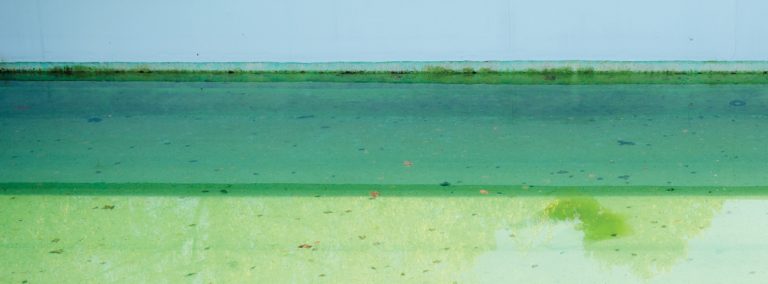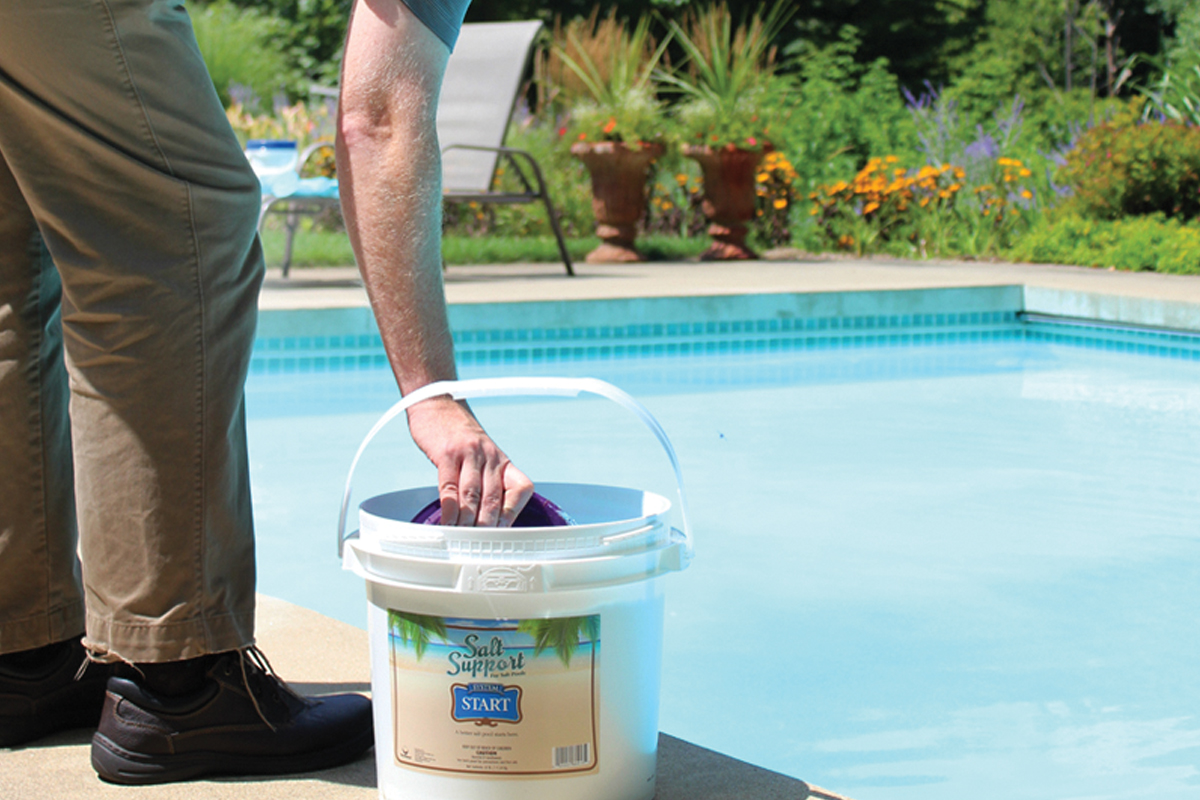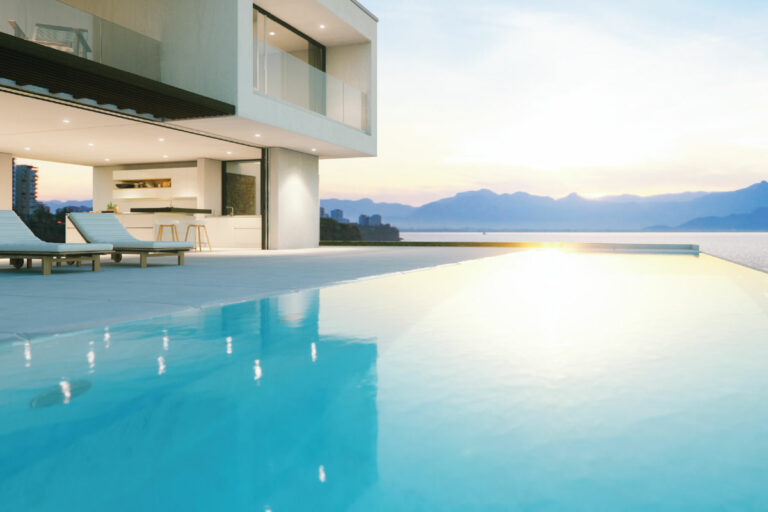Servicing High-End Pools — Water Care

Steve Kenny says you can only achieve and maintain luxury water if you treat every pool as an individual.
“I’m working on a pool right now in Montauk,” Kenny says of the famous shore town on the easternmost tip of Long Island, N.Y., where his company, SRK Pools, is located. “The customer’s desired water temperature is 95 degrees. With that kind of temperature, you’re talking about a different oxidation point, a different turnover rate and a different filtration rate. That requires 450 to 500 gallons per minute, which creates such a high demand that it will need five filtration systems. No two pools are the same. If you want perfect water, you engineer each system to meet the needs of that particular client.”
Modern water purification and maintenance is a delicate blend of science, art and technical wizardry that can be confusing and intimidating, even for the seasoned builder and service provider. Those who master the concepts and technology, however, can offer a level of quality and consistency that would have been unthinkable just a few years back.
Residual and Supplemental: the One-Two Punch
For CMP product design and marketing manager Vic Walker, the foundation of superior water purification is actually quite simple.
“The best possible solution for any pool, high-end or otherwise, is to provide a residual and supplemental sanitizer system,” he says. “The residual system will provide a foundation to help keep the water clean, clear and safe when the pump is not operating. The supplemental system will work with the residual system to combat pathogens that are more resistant to typical sanitizers like chlorine.”
Walker explains that tablet and erosion feeders, or chlorine generators in saltwater pools, form the base of most residual systems. Unlike chlorine tablets, chlorine generators create sanitizers without unwanted byproducts like cyanuric acid. Supplemental systems include ultraviolet, ozone and the mighty advanced oxidation process.
“AOP systems are the most powerful and utilize both UV and ozone to create even more powerful oxidizers called hydroxyl radicals,” Walker says. “AOP systems improve filtration as well by making organic matter clump together so it can more easily be captured by filter systems. When supplemental systems such as AOP are properly maintained and used in combination with a residual, they will lower the need for base chemicals such as chlorine.”
Think Outside the Sanitation Box
Kenny says treating every pool individually means meeting its unique challenges like turnover rate, dead spots in the pool, velocity in the lines, biofilm buildup, filtration rates and the best type of filter media to use.
“When people think of a pool, they think of one filter, two skimmers and three return lines,” Kenny says. “You need to think differently.”
After those variables are examined, Kenny goes to work, first by oxidizing with high levels of ozone.
“Depending on the water temperature and beta load, I’ll sidestream the ozone and put it into a contact tank, then I’ll decide how long of a contact time I want,” he says. “Two minutes is the norm, but sometimes I want more, so I’ll custom design a contact tank. That’s what’s going to burn out all the contaminants.”
When he’s done oxidizing, he sends the water back into a medium-pressure UV system on full flow.
“Every ounce of water is being touched by the UV, but then I send it back into the UV chamber to create that hydroxyl radical, which gives an extra boost while also destroying any dissolved ozone I have in the water,” he says. “You don’t want dissolved ozone.”
Kenny advises to never put the CO2 feed before the UV system, something he learned the hard way in the field: “We couldn’t understand why we were going through CO2 so quickly. Then the light bulb went off and we realized we were feeding it into the UV system. It destroys the ozone and converts it into hydroxyl radicals.”
Rethinking the ‘Chlorine Free’ Craze
The pool business has not been immune from the green-living trend, which has affected nearly every industry in one way or another. One byproduct of it has been a push for all-natural pools that don’t use chlorine. True experts, however, tend to think chlorine has gotten a bad rap.
“A lot of people want a chlorine-free solution,” Kenny says. “I’m not a big advocate of that. You need a trace amount of chlorine in the water to get rid of beta contamination.”
If your customer insists on a “natural” pool, Walker says it’s possible.
“Natural pools use biological filters to help keep the water clean and provide a unique ambiance and design,” Walker says. “Many all-natural pool builders use UV systems in their designs because they do not add any chemicals to the water. UV systems use light from the sun to disinfect water without changing the composition of the water. UV systems can also help with handling increased bather load and provide extra peace of mind for many homeowners.”
Kenny concurs, but is wary of the price tag.
“If you want to push chlorine free, you can do it — but you’re going to spend a lot of money,” he says. “Most people are going to spend $20,000 to $30,000 on a medium-pressure UV system, and then they’re going to add another $10,000 ozone system to the sidestream. It’s a little excessive, but I’m excessive when it comes to water, so if that’s what they want, I’m OK with it.”
The Art of Long-Term Maintenance
Installing customized residual and supplemental sanitation systems is a good start, but keeping those systems in good working order is the only way to extend the life of the equipment and maintain superior water quality over time. No matter the system, Walker suggests you keep in mind the following core principles:
- Chlorine-generating systems require periodic cleaning of the cell blades to prevent bridging, which can damage the cell and lower the system’s ability to generate chlorine.
- AOP maintenance requires UV bulb replacement about every 18 months.
- Ozone cell replacements are required every three to five years.
- On a day-to-day, hour-to-hour basis, however, ongoing maintenance requires mobile technology that enables remote monitoring in real time.
“I like to be held accountable for all my stuff, so we remote monitor all our systems,” Kenny says. “I know exactly what’s going on, I know what pumps are down, I know if the RP is too high or the pH is too high or too low, or if the temperatures aren’t working.”
Kenny mentioned Pentair’s ScreenLogic system, a platform that provides real-time feedback on everything from pumps to speeds to chemical controllers on hundreds of pools through a single app. Not only can the service team monitor all the company’s pools, but they can also make the necessary adjustments — often long before the homeowner ever knows there is an issue. “It’s like having a round-the-clock caretaker on site,” Kenny says. “It lets us be proactive instead of reactive.”






